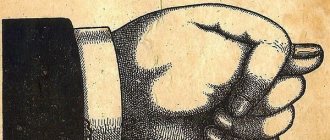Some men find it quite easy to talk to women, they do it on a regular basis, and they feel completely comfortable. And all because they, albeit a little, still understand the language of the female body. But still, most men find it quite difficult to understand women.
In most cases, they simply do not understand whether a girl likes them or not. And the fear of asking about a date or phone number does not give them the opportunity to start a new relationship. This is why every man needs to learn to read women's body language. Indeed, as a result, this will allow you to better understand girls and build happy and harmonious relationships with them.
History of the research issue
Psychology has been interested in body gestures for a long time (back in the days of Ancient Rome). This issue was even separated into a separate science called kinesics (later it was divided into narrower areas of knowledge). The following researchers made the greatest contribution to the development of this area:
- J. Balwer wrote a book on body language and gestures in psychology in 1644. The scientist paid special attention to the language of his hands. He concluded that it is a natural language, in contrast to the verbal method of communication, which was invented artificially.
- Pastor I. Caspar Lavater wrote an “Essay on Physiognomy” in 1792, which is considered to be the first systematic study of bodily movements. The work similarly describes the correspondence of a person’s personal properties to the expression of his face and body configuration.
- The German scientist G. K. Lichtenberg published a book in 1765 in which he criticized Lavater's work. He considered his understanding of physiognomy too simplified and far from the real practical activities of man.
- The artist, surgeon and neuroscientist C. Bell was particularly interested in the expressions of the human face, depending on different emotions. In 1844, as a result of many years of research into the nervous system, he concluded that any emotional fluctuations are accompanied by changes in respiratory and muscular activity.
- C. Darwin and E. Kretschmer in 1920 studied the connections between a person’s character and physique, as well as between a person’s emotions and facial expressions.
- D. Bonifacio, F. Bacon and D. Batista della Porta published treatises in 1616 in which they expressed the opinion that there is a universal body language that is understandable to absolutely all peoples of the world.
Among modern works on a given topic, Alexander Lowen’s book “Psychology of the Body” is popular. Bioenergetic analysis of the body." This work focuses on the study of psychosomatics and solving psychosomatic problems.
Similarities and differences between verbal and nonverbal communication
In psychology, body language and gestures have a number of similar characteristics. Here are the main ones:
- Any verbal and non-verbal element can take on contextual meaning depending on the culture of the area.
- In some cases, the meaning of what is planned can be conveyed either only in words or only in gestures.
- Both gestures and verbal units are symbolic signs that form the basis of the lexicon.
- Like linguistic units of different countries, gestures can also be translated and interpreted to suit specific conditions.
- Like natural language, gestures can vary across space and time, depending on economic and cultural conditions.
But there are also fundamental differences. Namely:
- Natural languages consist of relatively stable units, but body language tends to undergo changes.
- Linguistic means of communication have a much greater number of possibilities for describing ideas, phenomena, situations, and objects.
- Gestures are demonstrative in nature and are perceived by the visual apparatus. Language tools are more meaningful.
Visual body language of men
To understand the visual body language of men and notice interest, it is important to note the direction of their gaze. Anyone who is interested in you looks you up and down. First, the man notices the general attractiveness, then lowers his eyes, lingers on the chest and hips, and after a while looks at them again.
If a certain representative of the stronger sex shows sympathy, this can be seen by the frequency of glances and the enlargement of the pupils.
Key body segments
One of the founders of the psychology of body movements, Wilhelm Reich, conditionally divided the body into 7 segments, muscle contractions in which represent the corresponding problems:
- The eye segment is fears associated with human relationships (conflicts, grievances, evaluations, and so on).
- Oral segment—difficulty expressing feelings and emotions verbally.
- The cervical segment is the containment of anger and aggression.
- Thoracic segment - suppression of positive and negative emotions, experiences and desires, self-control, inability to express feelings.
- Diaphragmatic segment - suppression of anxiety or satisfaction, problems of willpower.
- Abdominal segment - suppression of fear of danger and anger.
- Pelvic segment - suppression of feelings caused by the instinct of self-preservation, blocking intimate stimulation.
The meaning of facial expressions
Human facial expressions are the movement and behavior of facial muscles. She is able to show a person’s thoughts and emotions without the use of speech. Dozens of muscles and fibers are concentrated around the human skull and jaw, which cannot be subordinated to the will, and even with great effort they can betray any mood.
You can “read” a great variety of emotions from your facial muscles: joy, surprise, complacency, fatigue, or a sly squint.
Gestures of sincerity and openness
Knowing the psychology of the body will help you understand how a person is disposed towards you, whether he is inclined to talk. Here are some gestures that symbolize sincerity, openness and benevolence:
- A person actively gestures, holding his hands in front of him, palms up.
- A person tries to reduce the distance during a conversation (sits closer or tries to establish tactile contact).
- An unbuttoned jacket is a symbol of openness and trust in business negotiations. A slightly loose tie knot has a similar meaning.
- Legs straightened and extended forward (if the interlocutors are communicating while sitting).
- Smile all over your face. If the eyes narrow and the nostrils widen, it means that the person is sincerely glad to see you and is committed to productive communication.
- A deep sigh of relief. Having noticed such a gesture, you can be sure that your conversation with the interlocutor will be easy and confidential.
Respect
For a man, there is the easiest and most reliable way to find out how the interlocutor treats him - a handshake. A person who respects you will be the first to extend his hand to greet you. If he does this without much desire or with a delay, he rather treats you somewhat arrogantly. The duration of the handshake, as well as the angle between the hands, also matters: people who respect each other do not try to quickly release their hand, and also keep their hands straight.
The look of a person who respects you is open, the smile is sincere. He often glances in your direction, and if he is looking for your approval, he will look away when your views intersect.
Closed gestures
Knowing the psychology of the body will help you understand that a person is tense and not in the mood to communicate. When a person is scared, feels discomfort or hostility towards the interlocutor, he, without realizing it, begins to “defend”. This is manifested through such gestures:
- Arms crossed on chest. This is a demonstration of self-doubt or a hostile attitude towards the interlocutor.
- Crossed legs (or cross-legged pose). It can indicate mistrust, and when combined with crossed arms, the meaning doubles. It is worth noting that many people find this position comfortable. But in a business conversation, it is better to avoid this pose, since the interlocutor may interpret it incorrectly.
- Hands pressed to the body or lying on the knees are an incomplete barrier. The pose demonstrates distrust or a negative attitude towards the interlocutor.
- Manipulation with things. If a person is constantly twirling a pen in his hands, holding a notepad, or clutching his bag, it means that he is trying to protect himself from you.
- Cringing. Arms pressed tightly to the body, legs closed, hunched shoulders - all these are signs that a person is trying to protect himself from you.
- Hands in pockets. This is a sign of detachment from the interlocutor.
Female body language: legs and feet
- She touches her thigh to yours, and does this more than once;
- Crosses his legs and points them in your direction. This does two things. Firstly, it makes her legs look longer. What is exciting and attractive to the subconscious male mind. Secondly, by pointing them in your direction, she wants you to notice her attractiveness;
- Crosses his legs. Women who wear high heels often do this. This is a subliminal message that, along with the one described in the previous paragraph, says: “I’m a little tired and want to rest.”
Exposing Lies
Body psychology is a powerful tool for exposing lies. You can tell that a person is being dishonest with you by the following signs:
- Touching any part of the face (mouth, nose, eyelids, cheeks, chin, etc.). When a person tells a lie, his hands subconsciously reach towards his face, as if trying to hide from shame.
- If a person scratches his eyelid, it means that he knows the truth, but is trying to hide it from you.
- Stroking or scratching the neck may mean that the person disagrees with your statement. But for certain reasons (for example, social status), he is afraid to admit it.
- If a person touches his earlobe, it means that he does not believe at all what you are telling him. But, again, he tries not to show it.
- If, before answering your question, a person looks away or begins to look into the distance, this means that he is trying to come up with some kind of lie.
- A smile with just your lips. If all other facial muscles remain motionless, it means the person is insincere with you.
- A sharp change in the pace of speech. If a person slows down or speeds up, it means that at that moment he is telling you a lie.
- Asymmetry of facial expressions and gestures. If only one side is working, or there is dissonance between the parties, then the person is insincere. Although, sometimes this may be due to anatomical features.
Voice and body language when talking to you
- A woman's body language is expressed not only through gestures and behavior, but also through her voice and words. Therefore, if a girl utters enthusiastic words and phrases like these: “really?”, “really?”, “mmm...”, “how interesting.” This shows that the lady wants you to know that she is interested in what you have to say;
- Her speech matches your speaking speed and tone. This means that she speaks at the same speed as you and with the same inclinations and nuances. She adapts her behavior to yours, thus trying to please you even more;
- She repeats your words. For example, a few minutes after you say something, she says the same words and phrases;
- Her tone of voice becomes more enthusiastic. The girl reacts faster to what you say and is not afraid to interrupt you. This shows that she feels comfortable in your presence;
- She uses the words “I” or “my” more often to make you think about her as often as possible and imagine her in your mind.
Gestures of aggression
All human emotions are certainly reflected in human gestures - such is psychology. Body language demonstrates an aggressive attitude as follows:
- Rivers clenched into a fist. This happens involuntarily when a person tries to restrain himself from openly displaying aggression.
- Hands rest with fists on sides. This is a more aggressive gesture, demonstrating readiness to attack the enemy.
- Sitting astride a chair. Reflects a hostile attitude towards the interlocutor, accompanied by a feeling of superiority.
- Hands clasped behind the back. This is an attempt to hide a negative attitude.
- Clenched teeth and lips. A sign of irritability and anger.
- “Chopping” the air or surface with the palm of your hand. This indicates a readiness for open confrontation.
- Stroking or scratching the back of the neck. Feeling threatened and ready to defend.
Voice intonation
The main ways of transmitting information are verbal. Nonverbal gestures can reveal what the other person is trying to hide. No less informative can be intonation, which can tell about the following:
- fast and confused speech in low tones indicates strong excitement;
- confident and loud conversation indicates active enthusiasm;
- if a person speaks sluggishly, lowering his tone towards the end of the phrase, we are talking about fatigue;
- measured and slow speech, which is characterized by a constant tone, indicates the arrogance of the interlocutor;
- constant pauses in speech and unintentional mistakes indicate nervousness and self-doubt.
Gestures of boredom
Body gestures in psychology personify almost all emotions and moods. In particular, it is important for a person to know the signs by which one can determine that a person is bored, that he is not interested in you, that it is time to end the conversation:
- If a person rests his chin or cheek on his hand, it means that he is tired of your chatter and, most likely, he has already lost the thread of the story.
- Tapping your foot on the floor or your fingers on the table is a sign of boredom and impatience. Your interlocutor wants to end the conversation as soon as possible.
- Extraneous activities (for example, drawing curls on paper) are a sign that a person is immersed in his own thoughts and is completely out of your attention.
- Glancing at the door or at the clock is a subconscious demonstration that the conversation has dragged on.
- Intense head nods are the interlocutor’s desire to speed up the conversation in order to come to a logical conclusion.
Is it true?
Many people are skeptical about such an issue as nonverbal communication. Gestures and facial expressions are perceived as something natural and mechanical. But it is precisely taking this fact into account that we can talk about the objectivity of the nonverbal mechanism. Psychologists have devoted many scientific works to this issue. But if this is not an argument for skeptics, it is enough to conduct independent observation. So, for example, having learned to decipher the thoughts and feelings of your family and friends, later you will be able to see through strangers. Of course, we should not forget that there are exceptions to the rules. Thus, a person can take one position or another simply out of habit. In addition, it cannot be ruled out that he is not feeling well or is wearing uncomfortable clothes. Air temperature can have a significant impact on human behavior. Thus, the role of nonverbal communication should not be underestimated. However, before drawing final conclusions, it is worth carefully analyzing the conditions in which the conversation takes place.
Types of handshakes
In the business world (and just in everyday communication), knowledge of psychology is very helpful. In body language, a handshake plays a significant role as the first contact, from which, in most cases, contact begins. Here's how you can decipher this gesture:
- An elbow-girth handshake is a sign of friendliness, a desire to communicate and establish close contact.
- Extending your hand with your palm down is a symbol that the person is trying to dominate you.
- Extending your hand with your palm up means that the person gives the initiative into your hands and is ready to obey your decision.
- The second hand on the shoulder during a handshake is a demonstration of a good attitude towards the interlocutor and a desire for close contact.
- Placing your other hand on top of a handshake is a demonstration of dominance.
- The vertical placement of the palms is a demonstration of equality and mutual respect.
- A handshake with a wrist girth is a demonstration of the joy of meeting and the desire for close friendship.
Distance
Considering non-verbal means of gestures, one cannot help but talk about the distance that is maintained between people under certain conditions. Thus, the following indicators are generally accepted:
- up to half a meter is an intimate distance between close people who are in a trusting relationship;
- from 0.5 to 1.5 m is the interpersonal distance for friendly communication;
- 1.5-3.5 m - social distance, which is comfortable for interaction between unfamiliar people, as well as on business matters;
- 3.7 m is the public distance from which a speech is given to a large audience.
Gait features
While studying the psychology of the body and physicality, researchers drew attention to the presence of a relationship between emotions and gait. Namely:
- Broad steps - enterprise and determination, zeal for active work, the presence of far-reaching plans.
- Frequent short steps - a tendency to caution, prudence, the ability to adapt, restraint in expressing feelings, speed of reaction.
- A deliberately slow gait indicates a desire to be the center of attention, a desire to live for show, a demonstration of strength.
- A careless, relaxed gait indicates disinterest and irresponsibility, immaturity of personality, lack of self-discipline, snobbery.
- Irrhythmic steps - increased anxiety, timidity.
- A swaying gait with pronounced movements of the hips - inflated self-esteem, excessive self-confidence.
- A shuffling gait - lack of will and aspirations, slowness, tendency to laziness.
- Unnaturally firm and angular gait - tightness, fear of communication, shyness, psychological tension.
- A bouncing gait is idealism, daydreaming, the need for a feeling of superiority.
Here is an example of gestures of a guy in love
To understand how to recognize facial expressions, gestures and other non-verbal signs in a person in practice, it is enough to look at a clear example. The body language of a man in love will help any woman accurately determine his true feelings and emotions in relation to her. There are several points to pay attention to:
- appearance - a man in love is neatly dressed, clean-shaven, smells pleasant;
- gaze - a close and appraising look into the eyes and lips of a woman;
- hands – involuntary manipulations, for example, brushing away specks of dust or straightening your hair;
- The voice is a timid, insinuating voice, without harshness or changes in intonation.
A man who likes a woman will demonstrate his strength and masculinity in every possible way. In addition, he will be interested in all areas of the life of his object of desire, and show care and responsibility.
Features of posture
When studying the psychology of the human body, you should pay attention to posture:
- An even but relaxed posture is a sign of openness to the world around you and good receptivity to everything new, the ability to quickly accumulate internal energy, unconditional trust in others, self-confidence, a sense of comfort and security.
- Fixed, tense posture - self-defense and detachment, a feeling of awkwardness in a particular situation, shyness and closedness, avoidance of contact with others, focus on internal problems, sensitivity and impressionability, rejection of criticism.
- A tense and rigid posture is sensitivity hidden under the guise of self-confidence.
- Lethargic posture is a sign of mental and emotional decline.
- Stooped posture - humility, desire to please and obey, submissiveness.
Female erotic hints
Relationships between opposite sexes are also reflected through body language and gestures. The psychology of women is designed in such a way that their body movements reveal their attitude towards men. Ladies' erotic hints can be recognized by the following signs:
- Wrist demonstration. This could be stroking, a carelessly raised sleeve, or playing with your fingers on a bracelet.
- Hair manipulation. If a woman feels sympathy for a certain man, then when she sees him, she begins to straighten it, twirl it around her finger, or effectively throw back her curls.
- Open mouth or licking lips. This is perhaps the most seductive gesture, which, by the way, women often demonstrate deliberately.
- Demonstration of ankles. As a rule, women cross them, slightly moving them to the side. Another seductive gesture is shaking your ankle with your shoe half off.
- Touching your feet. This could be stroking the thighs, calves or ankles.
How to recognize sympathy
One of the main problems in relationships between opposite sexes is mistrust. Sometimes nonverbal communication can tell more than words. Gestures that indicate sympathy are the following:
- The sparkle in the eyes is not a myth. A person experiencing sympathy actually looks a little differently, and the cornea becomes more hydrated. In addition, the pupils will be slightly dilated.
- A person in love on a subconscious level tries to please. Thus, when meeting, he performs various manipulations with his appearance: straightens his back, pulls in his stomach, straightens his hair.
- Both men and women try to draw attention to external sexual characteristics. This could be putting your fingers in the belt of your trousers, legs spread wide apart, or the top button of your shirt undone.
- Active gestures (sometimes inappropriate) can also serve as a sign of sympathy. The fact is that a person in love often loses control over his actions.
- You can assess the intentions of your interlocutor by the direction of his gaze. If he makes eye contact, there is reason to believe that he is interested in you as a person. And a glance running over the body speaks of nothing more than sexual desire.
- If your interlocutor of the opposite sex is constantly trying to get closer or touch you under any pretext, there is no doubt about his sympathy.
The meaning of kissing different parts of the body in psychology
Relationships between representatives of opposite sexes have always been the subject of close attention from experts. In the psychology of body language of women and men, a special place is given to the kiss. Or rather, its localization:
- In the neck - a hint of intimacy.
- On the cheek - a demonstration of a good attitude, as well as joy from the meeting.
- In the eyes - demonstrates serious and reverent feelings, as well as fear of separation.
- To the forehead - a demonstration of care and support, the desire to look after and protect a partner.
- In the hand - interest, increased attention or gratitude.
- In the nose - a desire to cheer, console, lift your spirits.
- In the ear - passion, a hint of intimacy.
- In the hair - a demonstration of patronage, a desire to care and protect.
- In the shoulder - hidden desire, suppressed passion.
- On the lips - close relationships, passion, love, affection.
- On the knee - tenderness and care, bordering on the desire to dominate a partner.
Sexual sympathy
yourspeech.ru
A sincere smile is the best indicator of sympathy. However, you need to learn to read it. It should be wide, the corners of the mouth should be raised, and the upper eyelids should be slightly lowered. This is a real, frank smile, which, like nothing else, indicates your likeability to a person. Mirroring the interlocutor's posture is also a universal sign of sympathy.
Confident men express their sympathy for a girl by lingering on her gaze. Those who are less confident, on the contrary, will sometimes glance at the object of their sighs, quickly changing the direction of their gaze. Also, a man can hook the belt in the abdominal area with his thumb, point his feet towards the woman and constantly adjust his clothes in her presence.
Signs of female sympathy are well known: ladies begin to unconsciously touch their hair and adjust their clothes. Attraction is also indicated by a slightly open mouth, enlarged pupils, and demonstration of sexual parts of the body.
Gestures around the world
The psychology of the human body can be viewed differently, depending on the national culture. Here are some interesting facts:
- In some countries (particularly Bulgaria, India and Greece), shaking your head from side to side means agreement, and nodding means refusal.
- In countries that practice Buddhism, patting a child on the head is perceived as aggression. In general, the reaction to any touch is negative, since it is a violation of personal space.
- A finger to the temple (demonstration of dementia) in Holland is perceived as praise for mental abilities, and in the UK - as advice to live by one’s own mind.
- Among the Spaniards, touching the earlobe is considered an indication of the presence of a person of non-traditional sexual orientation in the company.
- Showing your palm with your fingers outstretched is an insult to a Greek.
- When in Japan, give gifts with both hands. If you do this with one hand, the person may be offended.
- Crossing your fingers for luck is an obscene gesture in Vietnam.
- In African countries, it is indecent to look your interlocutor in the eyes for a long time.
Hidden consent
Very often, people internally agree with what you say, but in conversation they continue to defend their point of view. This can happen for various reasons: perhaps they are trying to negotiate more favorable terms when negotiating a contract, although they agree to less. The ability to read this internal agreement is very important.
The absence of the interlocutor’s gestures of disagreement and distrust, which are described above, speaks precisely of this. The person will argue with you, but at the level of gestures he does not show disagreement, behaving relaxed and free. This is a clear sign of willingness to accept your terms. If, at the moment of denying your words, he makes affirmative nods of his head, as if saying “Yes, yes, I understand everything, but...”, insist on your point, he really understands everything and has already accepted your conditions.
Useful tips
Studying the psychology of mind and body allows you to read people like an open book even before they have had time to convey any verbal information to you. But the process of cognition is quite long and complex. If you are interested in this issue, follow these recommendations:
- Learn to feel and understand your own body, compare feelings and desires with specific body movements. This will help you “unravel” other people easier.
- Do not rush to conclusions and do not rely on personal guesses and interpretations. Test your assumptions based on indirect evidence. Sometimes it would be useful to ask your interlocutor a delicate clarifying question.
- Having expressed your assumptions to your interlocutor, do not insist that you are right. Ask him to talk about his experiences and compare what he hears with previously made observations of body movements.
- don't be afraid of mistakes and corrections. This only deepens and develops your knowledge and skills.
- When observing your interlocutor, be sensitive. Few people like to feel a close, examining gaze on themselves. This can make a person close down, after which you will definitely not receive any objective information.
- Develop your powers of observation. Train your abilities in any place and situation, try to study both acquaintances and strangers.
Smile is different from smile: how not to make a mistake?
One of the most powerful means of seduction is a smile. However, not every smile can be perceived as a gesture of goodwill and goodwill. You can attract a man only with a sincere smile.
You can always feel a forced smile when you are not in a good mood at all. Also, a forced smile can not only bring a man closer, but also push him away. For example, he may think that you are smiling at him only because the rules of decency require it and nothing more.
Important: Do not try to seduce a man with an insincere smile.










